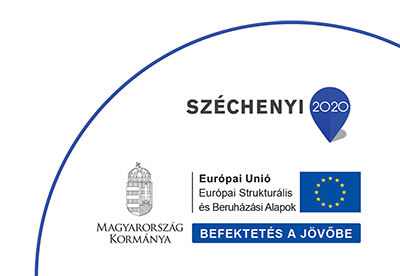If you experience or see something of interest or unusual, please don’t hesitate to contact us. Thank you.
Fertő-Hanság National Park
National Park on both sides of the border
Regions within the Fertő-Hanság National Park
Data sheet
| Register number: | 238/NP/91 |
| Beginning of protection: | 1976-1999 (more phases) |
| Védetté nyilvánító jogszabály (ok): | 14/1976. OKTH határozat 19/1977. OKTH határozat 2/1990. (XI. 21.) KTM rendelet 2/1991. (II. 9) KTM rendelet 5/1994. (III. 8.) KTM rendelet 1/1999. (I. 18.) KöM rendelet |
| Area: | 23730,9034 ha |
| of which strictly protected: | 7659,4587 ha |
| Settelements included: | Fertő-region: Fertőrákos, Sopron, Balf (Sopron), Fertőboz, Hidegség, Fertőhomok, Hegykő, Sarród, Fertőszéplak, Fertőújlak Hanság: Fehér-tó, Győrsövényház, Barbacs, Kóny, Maglóca, Bősárkány, Acsalag, Dör, Lébény, Jánossomorja, Kimle, Újrónafő, Csorna, Kapuvár, Osli Répce river: Répceszemere, Csáfordjánosfa, Nagygeresd, Vámoscsalád |
| Conservation authority of the first instance: | Észak-dunántúli Környezetvédelmi, Természetvédelmi és Vízügyi Felügyelőség |
National Park on both sides of the border
At the West-gate of Hungary the legends and tales were told of an enigmatic land. The mysterious water world of the Lake Fertő and the Hanság changed a lot over time. The lake and the man-shaped Hanság-area is today a natural treasure guarded by the common national park of two countries. Due to the conservation efforts of the two neighbouring countries the interested visitor can now enjoy nature, hike or just relax in those beautiful areas that were once barred by the Iron Curtain.
The Region of the Lake Fertő is a meeting point of climatic zones, floristic and zoogeographic provinces. These properties, unique for Europe and the diversity of habitats on a small area have determined the look of the landscape for thousands of years. The survival of this landscape.was partly aided by the people that have lived here almost continuously since ancient times in harmony with nature, using its resources with care. As an appreciation of the cultural and natural heritage that was established here the Fertő region (both the Hungarian and the Austrian part) received in December 2001 the title World Heritage in the category Cultural Landscape.
The whole area of the Fertő-Hanság National Park is 23 731 ha. The Fertő part was appointed 1977 a landscape protection area, since 1979 it is member of the UNESCO Network of Biosphere Reserves, since 1989 a Ramsar site (significant wetland). It received the national park title in 1991. The Hanság area lying east of the Fertő has been a landscape protection area since 1976 and was attached to the national park in 1994. The national park mosaic with the least area, but not the least value is the floodplain of the Répce river composed of protected flood-meadows and alluvial forests.
On the Austrian side the National Park Neusiedler See-Seewinkel comprises a part of the Lake Fertő, the shallow salt lakes of the Seewinkel and a small grassland area in the Hanság (Waasen), altogether on 9700 ha. The lake and surroundings that were appointed a landscape protection area in 1959 received national park title in the year 1993.
In the spring of 1994, the parts of the Austrian and the Hungarian national parks joined, so the first transboundary national park of Hungary came into being. Since that time the conservation of the protected areas is achieved by a close cooperation of the conservation experts of the two countries.
The Fertő-Hanság National Park Directorate manages the protected areas of national importance in the county Győr-Moson-Sopron since 1991. Our directorate does the conservation work not only in the national park but also in the Pannonhalma Landscape Protection Area. In the Szigetköz Landscape Protection Area we try to save the floodplain ecosystem of the Danube. The pre-alpine habitats of the Sopron Landscape Protection Area are of special value. The preservation of minor nature reserves, some protected parks, botanical gardens, marshes, saline grasslands is also part of the directorate’s work.
The Region of the Lake Fertő is a meeting point of climatic zones, floristic and zoogeographic provinces. These properties, unique for Europe and the diversity of habitats on a small area have determined the look of the landscape for thousands of years. The survival of this landscape.was partly aided by the people that have lived here almost continuously since ancient times in harmony with nature, using its resources with care. As an appreciation of the cultural and natural heritage that was established here the Fertő region (both the Hungarian and the Austrian part) received in December 2001 the title World Heritage in the category Cultural Landscape.
The whole area of the Fertő-Hanság National Park is 23 731 ha. The Fertő part was appointed 1977 a landscape protection area, since 1979 it is member of the UNESCO Network of Biosphere Reserves, since 1989 a Ramsar site (significant wetland). It received the national park title in 1991. The Hanság area lying east of the Fertő has been a landscape protection area since 1976 and was attached to the national park in 1994. The national park mosaic with the least area, but not the least value is the floodplain of the Répce river composed of protected flood-meadows and alluvial forests.
On the Austrian side the National Park Neusiedler See-Seewinkel comprises a part of the Lake Fertő, the shallow salt lakes of the Seewinkel and a small grassland area in the Hanság (Waasen), altogether on 9700 ha. The lake and surroundings that were appointed a landscape protection area in 1959 received national park title in the year 1993.
In the spring of 1994, the parts of the Austrian and the Hungarian national parks joined, so the first transboundary national park of Hungary came into being. Since that time the conservation of the protected areas is achieved by a close cooperation of the conservation experts of the two countries.
The Fertő-Hanság National Park Directorate manages the protected areas of national importance in the county Győr-Moson-Sopron since 1991. Our directorate does the conservation work not only in the national park but also in the Pannonhalma Landscape Protection Area. In the Szigetköz Landscape Protection Area we try to save the floodplain ecosystem of the Danube. The pre-alpine habitats of the Sopron Landscape Protection Area are of special value. The preservation of minor nature reserves, some protected parks, botanical gardens, marshes, saline grasslands is also part of the directorate’s work.
Regions within the Fertő-Hanság National Park
Lake Fertő and its reed belt
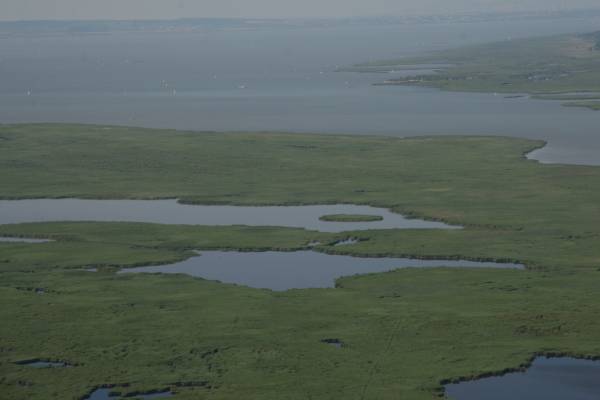 The Hungarian side of Lake Fertő consists largely of reedy marshes. The marshland is interrupted only by inner lakes and the network of waterways (channels) that were established to ensure traffic. Among the reed there are patches of bulrush and saw-sedge, near the shore populations of tall sedges, wet meadows and marsh meadows. Among the plant species the invertebrate-eating bladderwort and the rare sedge Scirpus litoralis living on the inner lakes can be mentioned.
The Hungarian side of Lake Fertő consists largely of reedy marshes. The marshland is interrupted only by inner lakes and the network of waterways (channels) that were established to ensure traffic. Among the reed there are patches of bulrush and saw-sedge, near the shore populations of tall sedges, wet meadows and marsh meadows. Among the plant species the invertebrate-eating bladderwort and the rare sedge Scirpus litoralis living on the inner lakes can be mentioned.
Among the several hundred invertebrate species the Large White-faced Darter, the Ornate Bluet or the hidden living spider Tetragnatha reimoseri can be picked out. The fish fauna of the lake is outstanding not only on Hungarian but also on the international level. Research over the last decades found 35 species in the lake, among which the European Weatherfish can be pointed out due to its importance for conservationists. The amphibian and reptile populations of the lake are of national importance, ten thousands of frogs, newts and toads grow up in the reedy marshland.
Most spectacular representatives of the local fauna are the birds. Outstanding is the population of Great Egrets (700 pairs), the Greylag Goose of which hundreds are breeding here each year and the Purple Heron, also present in large numbers.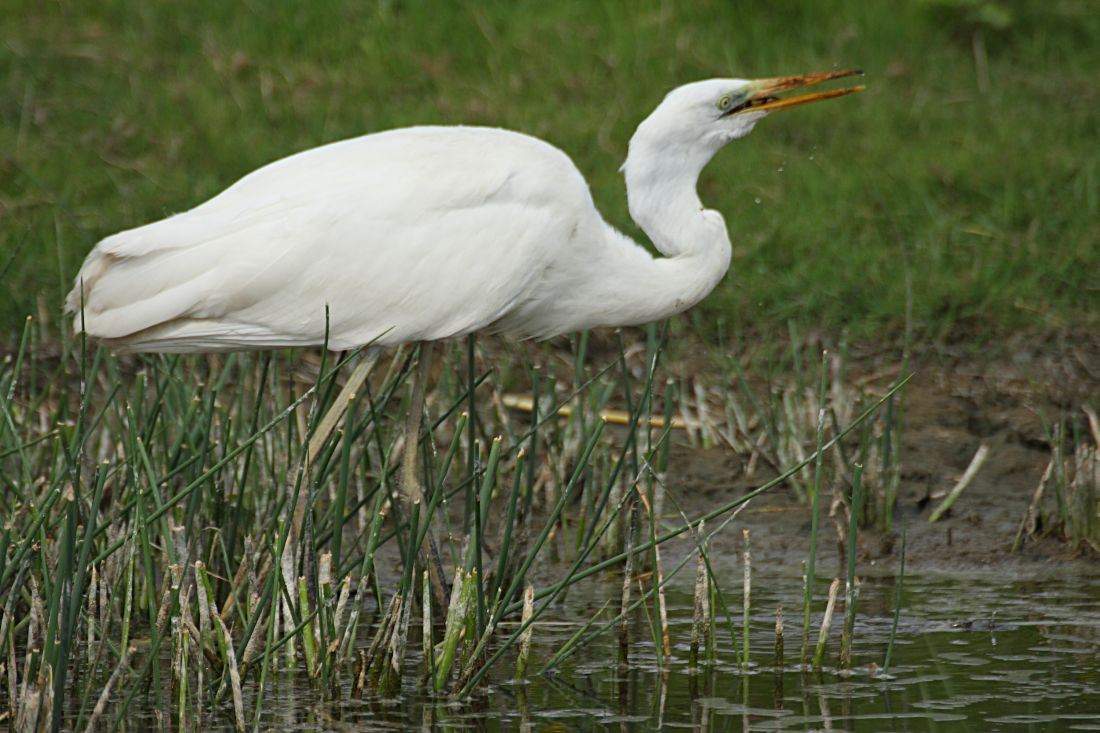 Regular breeding birds are the Spoonbill, the Bittern, the Squacco Heron and the Little Bittern, the Red-crested Pochard and the rare Ferruginous Duck. The reed songbirds are also present in great numbers, remarkable are the Moustached Warbler, the Bearded Tit, the Bluethroat, the Great Reed Warbler, Savi’s Warbler or the Eurasian Reed Warbler.
Regular breeding birds are the Spoonbill, the Bittern, the Squacco Heron and the Little Bittern, the Red-crested Pochard and the rare Ferruginous Duck. The reed songbirds are also present in great numbers, remarkable are the Moustached Warbler, the Bearded Tit, the Bluethroat, the Great Reed Warbler, Savi’s Warbler or the Eurasian Reed Warbler.
The lake Fertő is important not only from the breeding birds’ point of view. Ten thousands of birds assemble here during the migration period. Great masses of the Garganey and the Eurasian Teal gather on the water among others, while in autumn flocks of hundred thousands of starlings may come to the reed belt for night rest.
The world of the saline steppes and lakes
Along the eastern and south-eastern shores of the lake lies a belt of saline and marsh meadows. Upon the deeper lying regions seasonally covered with water we can find the Common Glasswort, the Herbaceous and the Hungarian Seepweed and the Camphor. On extended saline meadows the Sea Aster blossoms in autumn, painting pink the meadows grazed with Hungarian Grey Cattle, Racka Sheep and Water Buffalo.
In between the grassland habitats there lie several shallow, partly saline lakes (Cikes, Borsodi, Nyéki szállás, Paprét), which emerged following the habitat reconstructions starting in 1990. The habitat reconstruction realized on some 600 Hectares tries to replace the swampy areas that were left behind each time after the floods of the Lake Fertő, which ceased after the regulations (end of the 19th, beginning of the 20th century).
The saline lakes are the most visited parts of the national park. Due to the open landscape, the birds can be easily studied from the watchtowers nearby. Often 40-50 species can be observed at a time, almost every time of the year. Beside the so-called shorebirds there are many duck species and the herons and egrets come here from the reed for foraging. Just to mention a few species: the Black-winged Stilt, the Avocet, the Northern Lapwing, the Black-tailed Godwit, the Redshank, and the Dunlin.
Szárhalmi Forest and the surrounding wet meadows
Among the forests on the hills adjacent to the Lake Fertő the most important – from the conservationist’s point of view – is the Szárhalmi Forest. Flora and fauna of the forest are very similar to that of mountains due to the climatic effects here. In the 412 ha great forest Hornbeam and Sessile Oak are the dominant tree species, additional patches are made up of Turkey Oak and Downy Oak. There are also some European Pears, Wild Cherries and a few species of rowan. Several shrub species and protected plants live in the forest and on the inner steppes.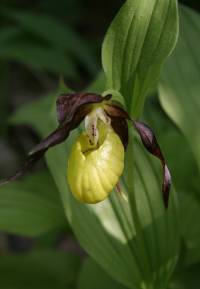
In early spring Pasque Flower and Spring Pheasant's Eye blossom, later a carpet of Lily-of-the-Valley spreads its fragrance from under the trees. Two strictly protected orchid species live on the dry meadows here: the Lady’s Slipper Orchid and the rare Fly Orchid.
The silence of the wood is only interrupted by the song of the Nightingale, the Yellowhammer and other passerine birds. The forest puddles and wheel-tracks provide a reproduction site for the Common Toad and masses of Agile Frogs.
At the foot of the hills there are wet and marsh-meadows, among which the Kistómalmi wet meadow represents a special value. The strictly protected „insect-eating” Common Butterwort and the Pale Orchid live only here in Hungary.
Wet meadows and marsh-meadows of the Hanság
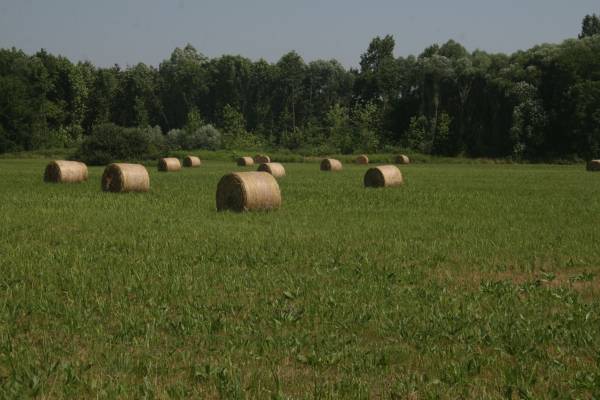 Of the once several thousand Hectares of the Blue and Purple Moor-grass meadows only a few hundred Hectares remained today in the Northern Hanság. Some characteristic protected plant species of the wet meadows are the Blue Moor-grass, the Early Marsh Meadow Orchid, the Marsh Gentian and the Summer Snowflake. Among the reptiles the only endemic reptile subspecies, the Hungarian Meadow Viper must be mentioned, of which a stable population lives on the area. The strictly protected Corn Crake breeds regularly, and fortunately increasingly often here, as well as the Montagu’s Harrier.
Of the once several thousand Hectares of the Blue and Purple Moor-grass meadows only a few hundred Hectares remained today in the Northern Hanság. Some characteristic protected plant species of the wet meadows are the Blue Moor-grass, the Early Marsh Meadow Orchid, the Marsh Gentian and the Summer Snowflake. Among the reptiles the only endemic reptile subspecies, the Hungarian Meadow Viper must be mentioned, of which a stable population lives on the area. The strictly protected Corn Crake breeds regularly, and fortunately increasingly often here, as well as the Montagu’s Harrier.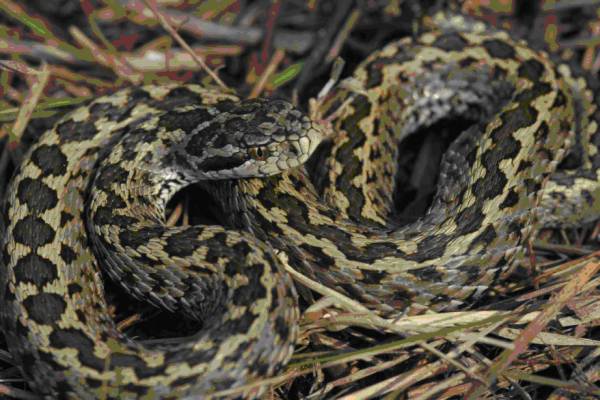
Open wetlands of the Hanság and the Tóköz
Following the drainage most lakes of the Hanság and the Tóköz disappeared, only the Lake Fehér and the Lake Barbacsi remained. As a result of turf-cutting smaller lakes emerged (Lake Király, Lake Tündér and Lake Fövenyes), these and the drain-canals were a refuge for the water plant-, fish- and amphibian species of the lost marshland world.
The wetland reconstruction project of the Hanság started in 2001 tries to restore the open wetlands and the marshes. Its first step was realized in the area Nyirkai-Hany.
Among the several plant species of the open wetlands the Water Soldier or the Yellow Floating Heart can be emphasised. The most frequent amphibian species are the Water Frog, the Moor Frog and the EU-wide endangered European Fire-bellied Toad. The flooded Nyirkai-Hany was quickly detected by the breeding and migratory birds. The area became a wetland of international importance (ramsar site) in 2006.
A few species are: Ferruginous Duck, Garganey, Common Pochard, Great Crested Grebe, Eurasian Bittern, Purple Heron.

Swamp forests in the Hanság
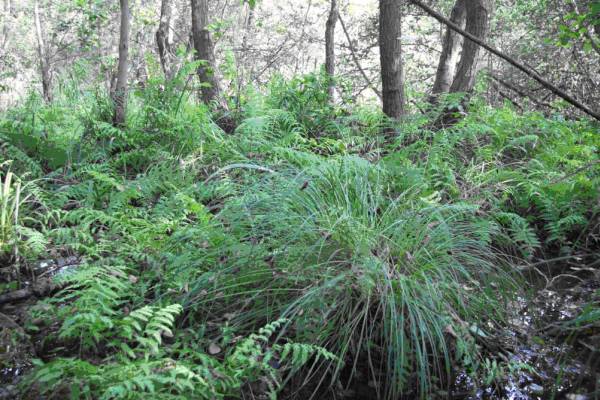 In the Hanság the proportion of the woods was up to the 1960-ies fairly low, but there were on several places Alder- and Willow swamps as well as Oak woods. After the drainage there was a significant rearrangement of the wooded areas. The original woods that remained (Csíkos Alder wood, Vesszős wood, Figurák) represent an outstanding natural heritage. Their insect fauna is rich, several songbirds nest here. Other breeding birds are the Black Stork, the Eurasian Eagle Owl, the colony-breeding Grey Heron and the Night Heron.
In the Hanság the proportion of the woods was up to the 1960-ies fairly low, but there were on several places Alder- and Willow swamps as well as Oak woods. After the drainage there was a significant rearrangement of the wooded areas. The original woods that remained (Csíkos Alder wood, Vesszős wood, Figurák) represent an outstanding natural heritage. Their insect fauna is rich, several songbirds nest here. Other breeding birds are the Black Stork, the Eurasian Eagle Owl, the colony-breeding Grey Heron and the Night Heron.
The swamp-meadows beside the River Répce and the Csáford-forest
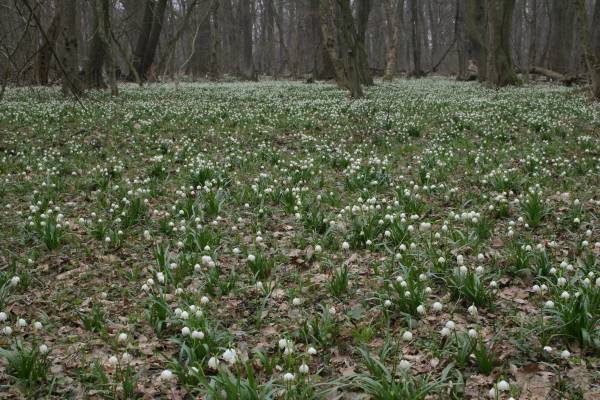 On the unregulated section of the River Répce, between Nagygeresd and Répceszemere the flora and fauna of the rivulets can be studied almost in their original state. Among the natural values of the regularly mown floodplain meadows and the alluvial forests most interest was always directed to the remnant floodplain forest next to the settlement Csáfordjánosfa, the so called Csáford Snowflake forest. Under the 150-200 years old pedunculate oaks and common ashes blossom in the early spring millions of Spring Snowflakes. The white sea of snowflakes is interrupted by the colourful flowers of the Alpine Squill and the Hollowroot. The dying trees also have a role to play – before they perish dozens of insects and fungi feed on and live in them for decades. Among the forest birds the Nuthatch, the Chaffinch, the Hoopoe or the Woodpeckers present in large numbers can be mentioned.
On the unregulated section of the River Répce, between Nagygeresd and Répceszemere the flora and fauna of the rivulets can be studied almost in their original state. Among the natural values of the regularly mown floodplain meadows and the alluvial forests most interest was always directed to the remnant floodplain forest next to the settlement Csáfordjánosfa, the so called Csáford Snowflake forest. Under the 150-200 years old pedunculate oaks and common ashes blossom in the early spring millions of Spring Snowflakes. The white sea of snowflakes is interrupted by the colourful flowers of the Alpine Squill and the Hollowroot. The dying trees also have a role to play – before they perish dozens of insects and fungi feed on and live in them for decades. Among the forest birds the Nuthatch, the Chaffinch, the Hoopoe or the Woodpeckers present in large numbers can be mentioned.
The protected area along the River Répce includes beside the woods wide floodplain meadows and wet meadows as well, for the survival of which the practice of the several hundred years old traditional management is needed. From the plants of the colourful and diverse meadows we can admire for example the protected Large Pink and the Siberian Iris. An ecologically important plant is the Great Burnet, being the feeding plant of the butterfly Scarce Large Blue.
 The Hungarian side of Lake Fertő consists largely of reedy marshes. The marshland is interrupted only by inner lakes and the network of waterways (channels) that were established to ensure traffic. Among the reed there are patches of bulrush and saw-sedge, near the shore populations of tall sedges, wet meadows and marsh meadows. Among the plant species the invertebrate-eating bladderwort and the rare sedge Scirpus litoralis living on the inner lakes can be mentioned.
The Hungarian side of Lake Fertő consists largely of reedy marshes. The marshland is interrupted only by inner lakes and the network of waterways (channels) that were established to ensure traffic. Among the reed there are patches of bulrush and saw-sedge, near the shore populations of tall sedges, wet meadows and marsh meadows. Among the plant species the invertebrate-eating bladderwort and the rare sedge Scirpus litoralis living on the inner lakes can be mentioned.Among the several hundred invertebrate species the Large White-faced Darter, the Ornate Bluet or the hidden living spider Tetragnatha reimoseri can be picked out. The fish fauna of the lake is outstanding not only on Hungarian but also on the international level. Research over the last decades found 35 species in the lake, among which the European Weatherfish can be pointed out due to its importance for conservationists. The amphibian and reptile populations of the lake are of national importance, ten thousands of frogs, newts and toads grow up in the reedy marshland.
Most spectacular representatives of the local fauna are the birds. Outstanding is the population of Great Egrets (700 pairs), the Greylag Goose of which hundreds are breeding here each year and the Purple Heron, also present in large numbers.
 Regular breeding birds are the Spoonbill, the Bittern, the Squacco Heron and the Little Bittern, the Red-crested Pochard and the rare Ferruginous Duck. The reed songbirds are also present in great numbers, remarkable are the Moustached Warbler, the Bearded Tit, the Bluethroat, the Great Reed Warbler, Savi’s Warbler or the Eurasian Reed Warbler.
Regular breeding birds are the Spoonbill, the Bittern, the Squacco Heron and the Little Bittern, the Red-crested Pochard and the rare Ferruginous Duck. The reed songbirds are also present in great numbers, remarkable are the Moustached Warbler, the Bearded Tit, the Bluethroat, the Great Reed Warbler, Savi’s Warbler or the Eurasian Reed Warbler.The lake Fertő is important not only from the breeding birds’ point of view. Ten thousands of birds assemble here during the migration period. Great masses of the Garganey and the Eurasian Teal gather on the water among others, while in autumn flocks of hundred thousands of starlings may come to the reed belt for night rest.
The world of the saline steppes and lakes
Along the eastern and south-eastern shores of the lake lies a belt of saline and marsh meadows. Upon the deeper lying regions seasonally covered with water we can find the Common Glasswort, the Herbaceous and the Hungarian Seepweed and the Camphor. On extended saline meadows the Sea Aster blossoms in autumn, painting pink the meadows grazed with Hungarian Grey Cattle, Racka Sheep and Water Buffalo.
In between the grassland habitats there lie several shallow, partly saline lakes (Cikes, Borsodi, Nyéki szállás, Paprét), which emerged following the habitat reconstructions starting in 1990. The habitat reconstruction realized on some 600 Hectares tries to replace the swampy areas that were left behind each time after the floods of the Lake Fertő, which ceased after the regulations (end of the 19th, beginning of the 20th century).
The saline lakes are the most visited parts of the national park. Due to the open landscape, the birds can be easily studied from the watchtowers nearby. Often 40-50 species can be observed at a time, almost every time of the year. Beside the so-called shorebirds there are many duck species and the herons and egrets come here from the reed for foraging. Just to mention a few species: the Black-winged Stilt, the Avocet, the Northern Lapwing, the Black-tailed Godwit, the Redshank, and the Dunlin.
Szárhalmi Forest and the surrounding wet meadows
Among the forests on the hills adjacent to the Lake Fertő the most important – from the conservationist’s point of view – is the Szárhalmi Forest. Flora and fauna of the forest are very similar to that of mountains due to the climatic effects here. In the 412 ha great forest Hornbeam and Sessile Oak are the dominant tree species, additional patches are made up of Turkey Oak and Downy Oak. There are also some European Pears, Wild Cherries and a few species of rowan. Several shrub species and protected plants live in the forest and on the inner steppes.

In early spring Pasque Flower and Spring Pheasant's Eye blossom, later a carpet of Lily-of-the-Valley spreads its fragrance from under the trees. Two strictly protected orchid species live on the dry meadows here: the Lady’s Slipper Orchid and the rare Fly Orchid.
The silence of the wood is only interrupted by the song of the Nightingale, the Yellowhammer and other passerine birds. The forest puddles and wheel-tracks provide a reproduction site for the Common Toad and masses of Agile Frogs.
At the foot of the hills there are wet and marsh-meadows, among which the Kistómalmi wet meadow represents a special value. The strictly protected „insect-eating” Common Butterwort and the Pale Orchid live only here in Hungary.
Wet meadows and marsh-meadows of the Hanság
 Of the once several thousand Hectares of the Blue and Purple Moor-grass meadows only a few hundred Hectares remained today in the Northern Hanság. Some characteristic protected plant species of the wet meadows are the Blue Moor-grass, the Early Marsh Meadow Orchid, the Marsh Gentian and the Summer Snowflake. Among the reptiles the only endemic reptile subspecies, the Hungarian Meadow Viper must be mentioned, of which a stable population lives on the area. The strictly protected Corn Crake breeds regularly, and fortunately increasingly often here, as well as the Montagu’s Harrier.
Of the once several thousand Hectares of the Blue and Purple Moor-grass meadows only a few hundred Hectares remained today in the Northern Hanság. Some characteristic protected plant species of the wet meadows are the Blue Moor-grass, the Early Marsh Meadow Orchid, the Marsh Gentian and the Summer Snowflake. Among the reptiles the only endemic reptile subspecies, the Hungarian Meadow Viper must be mentioned, of which a stable population lives on the area. The strictly protected Corn Crake breeds regularly, and fortunately increasingly often here, as well as the Montagu’s Harrier.
Open wetlands of the Hanság and the Tóköz
Following the drainage most lakes of the Hanság and the Tóköz disappeared, only the Lake Fehér and the Lake Barbacsi remained. As a result of turf-cutting smaller lakes emerged (Lake Király, Lake Tündér and Lake Fövenyes), these and the drain-canals were a refuge for the water plant-, fish- and amphibian species of the lost marshland world.
The wetland reconstruction project of the Hanság started in 2001 tries to restore the open wetlands and the marshes. Its first step was realized in the area Nyirkai-Hany.
Among the several plant species of the open wetlands the Water Soldier or the Yellow Floating Heart can be emphasised. The most frequent amphibian species are the Water Frog, the Moor Frog and the EU-wide endangered European Fire-bellied Toad. The flooded Nyirkai-Hany was quickly detected by the breeding and migratory birds. The area became a wetland of international importance (ramsar site) in 2006.
A few species are: Ferruginous Duck, Garganey, Common Pochard, Great Crested Grebe, Eurasian Bittern, Purple Heron.

Swamp forests in the Hanság
 In the Hanság the proportion of the woods was up to the 1960-ies fairly low, but there were on several places Alder- and Willow swamps as well as Oak woods. After the drainage there was a significant rearrangement of the wooded areas. The original woods that remained (Csíkos Alder wood, Vesszős wood, Figurák) represent an outstanding natural heritage. Their insect fauna is rich, several songbirds nest here. Other breeding birds are the Black Stork, the Eurasian Eagle Owl, the colony-breeding Grey Heron and the Night Heron.
In the Hanság the proportion of the woods was up to the 1960-ies fairly low, but there were on several places Alder- and Willow swamps as well as Oak woods. After the drainage there was a significant rearrangement of the wooded areas. The original woods that remained (Csíkos Alder wood, Vesszős wood, Figurák) represent an outstanding natural heritage. Their insect fauna is rich, several songbirds nest here. Other breeding birds are the Black Stork, the Eurasian Eagle Owl, the colony-breeding Grey Heron and the Night Heron.The swamp-meadows beside the River Répce and the Csáford-forest
 On the unregulated section of the River Répce, between Nagygeresd and Répceszemere the flora and fauna of the rivulets can be studied almost in their original state. Among the natural values of the regularly mown floodplain meadows and the alluvial forests most interest was always directed to the remnant floodplain forest next to the settlement Csáfordjánosfa, the so called Csáford Snowflake forest. Under the 150-200 years old pedunculate oaks and common ashes blossom in the early spring millions of Spring Snowflakes. The white sea of snowflakes is interrupted by the colourful flowers of the Alpine Squill and the Hollowroot. The dying trees also have a role to play – before they perish dozens of insects and fungi feed on and live in them for decades. Among the forest birds the Nuthatch, the Chaffinch, the Hoopoe or the Woodpeckers present in large numbers can be mentioned.
On the unregulated section of the River Répce, between Nagygeresd and Répceszemere the flora and fauna of the rivulets can be studied almost in their original state. Among the natural values of the regularly mown floodplain meadows and the alluvial forests most interest was always directed to the remnant floodplain forest next to the settlement Csáfordjánosfa, the so called Csáford Snowflake forest. Under the 150-200 years old pedunculate oaks and common ashes blossom in the early spring millions of Spring Snowflakes. The white sea of snowflakes is interrupted by the colourful flowers of the Alpine Squill and the Hollowroot. The dying trees also have a role to play – before they perish dozens of insects and fungi feed on and live in them for decades. Among the forest birds the Nuthatch, the Chaffinch, the Hoopoe or the Woodpeckers present in large numbers can be mentioned.The protected area along the River Répce includes beside the woods wide floodplain meadows and wet meadows as well, for the survival of which the practice of the several hundred years old traditional management is needed. From the plants of the colourful and diverse meadows we can admire for example the protected Large Pink and the Siberian Iris. An ecologically important plant is the Great Burnet, being the feeding plant of the butterfly Scarce Large Blue.



